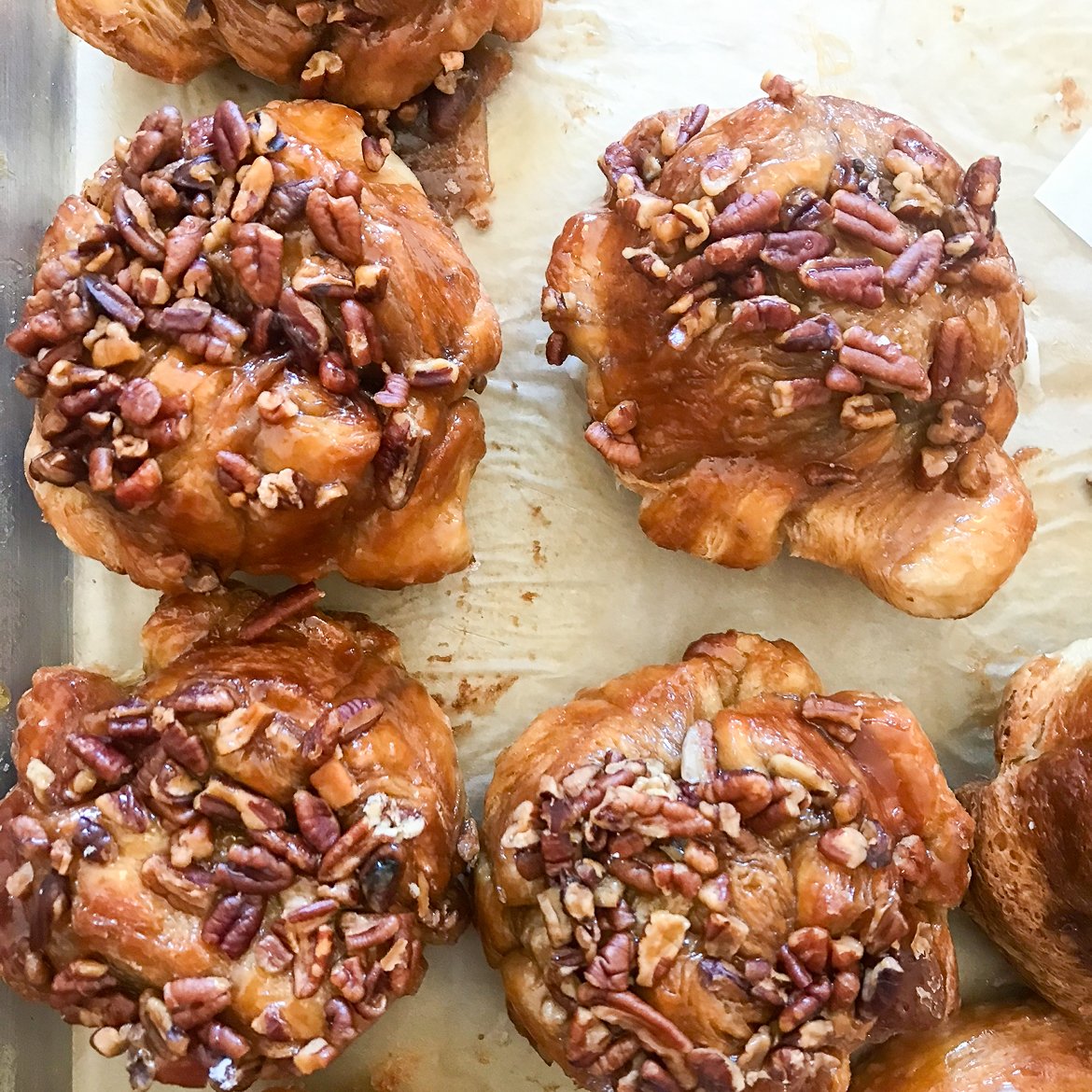5 Habits for an eco-friendly kitchen
Let’s help the planet every day, starting AT HOME
Reducing household food waste is the single greatest personal step you can take to reduce greenhouse gases.
What if Earth Day were every day?
Imagine the impact if we all had a daily focus on protecting the planet with everything we do.
Of course, we need our systems and government to lead the way (hey policy makers, it’s time to step up!), but surely we can do better individually by our beautiful threatened Earth.
Here are some green habits we’ve adopted at our bakery that are great to try at home.
What we do: Reuse pickle buckets*
What you can do:
Find ways to reuse food-safe containers instead of throwing away or recycling.
Reuse jars and yogurt containers for food storage
Save clean glass jars and use to make quick pickles, salad dressings, or marinades. Use jelly jars for drinking glasses, yogurt containers and lids to store leftovers or freeze quarts of soup.
Use a plate to cover a bowl instead of plastic film.
Clean, save and reuse plastic bags. Better still, use mesh bags and avoid plastic
* Need some food-grade 5 gallon buckets for kitchen or garden use? We’re happy to share! To arrange for pick up at our N. Fremont St. commissary in Portland, please contact us.
Fact: food waste costs an average of $1,600 per year for a family of four, and globally accounts for about 8 percent of annual greenhouse gas emissions (source: world resources institute)
What we do: Track end-of-day food waste
What you can do:
Avoid food waste by not over-buying when you shop.
Make a weekly meal plan.
Always shop with a grocery list (and when you’re not hungry).
Be honest about how many meals you plan away from home in the next few days.
Freeze leftovers in clearly labeled containers for future meals.
Increase the shelf life of fresh greens and vegetables (and avoid throwing away spoiled produce) by washing and storing them properly.
What we do: Use extra food to make other delicious food
Extra croissants become twice-baked croissants stuffed with almond paste or ham and cheese.
Extra croissant dough gets swirled with caramel and nuts to make Pecan Pullaparts.
What you can do:
Use leftover bread to make rustic croutons, bread pudding, or strata.
Make fresh or toasted bread crumbs from a day-old loaf.
Use overripe bananas to make banana bread or smoothies.
Use overripe soft fruit to make small-batch jam or fruit compote.
Use leftover roast veggies / meat to make fried rice, pasta, a quiche, or a grain bowl.
FACT: Local food keeps local land in production and local money in the community, and small farms more readily adopt environmentally friendly practices.
What we do: Use the freezer as a pantry
How to have local blueberries year-round? Buy a farmer’s whole crop and freeze it! We also purchase and freeze large cuts of grass-fed meat and keep doughs and certain pastries frozen after prepping for quality and freshness. At home, the freezer can help you control your inventory of bread and doughs.
What you can do:
Buy local berries in bulk and freeze to use through the year as needed; imported out-of-season berries have a huge carbon footprint.
Freeze tomatoes and tomato sauce to use in the off-season.
Buy sustainably raised local meat and seafood in bulk (often at a discount compared to smaller amounts) and freeze
Freeze portioned cookie dough and pie crusts; bake only what you need.
Avoid stale bread by freezing what you won’t eat in 24 hours (sliced). Toast as needed for sandwiches or meals.
Cut Potato Buns in half and freeze. Toast and use for breakfast sandwiches.
What we do: SAVE vegetable trimmings for the LOCAL chickens
What you can do:
Save veggie trimmings to make vegetable stock (freeze what you won’t use right away).
Got a neighbor with chickens? Ask if they could use your household vegetable scraps.
Make soup with those wilted vegetables in the crisper.
Compost veggie trimmings (produces less carbon than throwing them away).
Sky Valley Farms drops off pastured eggs in Seattle and takes vegetable trimmings back to the farm to feed young chickens.




